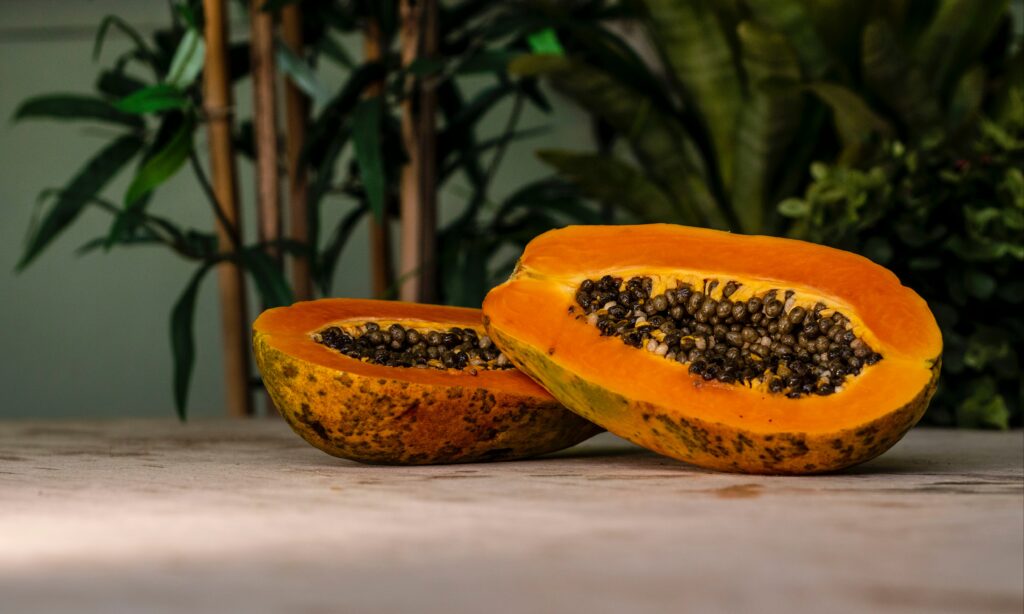

wordpress-seo domain was triggered too early. This is usually an indicator for some code in the plugin or theme running too early. Translations should be loaded at the init action or later. Please see Debugging in WordPress for more information. (This message was added in version 6.7.0.) in /home/sehatnagar.com/public_html/wp-includes/functions.php on line 6114
Diabetes is a chronic disease that affects millions of people worldwide. It is characterized by high blood sugar levels that can lead to various health complications, including cardiovascular disease, kidney disease, and nerve damage. While there are several treatments available for diabetes, many people are turning to natural remedies to manage their condition. One such remedy is papaya. In this article, we will explore the benefits of papaya for diabetes and whether it is a good choice for people with this condition.
Papaya is a tropical fruit that is native to Central and South America. It is also known as pawpaw or papaw in some regions. The fruit is oval-shaped and can grow up to 20 inches long. The flesh of the fruit is bright orange and has a sweet, juicy taste. Papayas are usually eaten raw, either on their own or in fruit salads, but they can also be cooked and used in a variety of dishes.
Papayas are rich in vitamins, minerals, and antioxidants, making them a healthy addition to any diet. They are particularly high in vitamin C, folate, and potassium. Papayas also contain a group of enzymes called papain, which can aid in digestion and have anti-inflammatory properties.
One of the key benefits of papaya for people with diabetes is its low glycemic index (GI). The GI is a measure of how quickly a food raises blood sugar levels. Foods with a high GI can cause blood sugar spikes, which can be dangerous for people with diabetes. Papaya has a GI of around 60, which is considered to be moderate. This means that it can help to keep blood sugar levels stable, making it a good choice for people with diabetes.
Several studies have looked at the effects of papaya on blood sugar levels. A 2011 study published in the journal Nutrition and Metabolism found that people with type 2 diabetes who consumed papaya for 12 weeks had lower blood sugar levels and improved insulin sensitivity compared to those who did not consume papaya.
Another study published in the Journal of Medicinal Food in 2012 found that papaya leaf extract could lower blood sugar levels in rats with diabetes. While these studies are promising, more research is needed to confirm the benefits of papaya for blood sugar management in humans.
In addition to its potential benefits for blood sugar management, papaya has several other health benefits that may be particularly beneficial for people with diabetes. For example, papayas are high in fiber, which can help to regulate blood sugar levels and promote healthy digestion.
Papayas are also rich in antioxidants, which can help to reduce inflammation and protect against oxidative stress. Inflammation and oxidative stress are both risk factors for a range of health conditions, including diabetes and cardiovascular disease.

If you are interested in incorporating papaya into your diet to manage diabetes, there are several ways to do so. Papaya can be eaten on its own as a snack, or it can be added to fruit salads or smoothies. It can also be used in savory dishes, such as curries and salsas.
When incorporating papaya into your diet, it is important to be mindful of portion sizes. While papaya is a healthy fruit, it still contains carbohydrates, which can affect blood sugar levels. Be sure to speak with a healthcare professional or a registered dietitian to determine how much papaya is appropriate for your individual needs.
While papaya is generally safe for most people, there are a few potential side effects to be aware of. Some people may be allergic to papaya, and consuming it can cause allergic reactions such as hives, itching, and difficulty breathing.
Additionally, papaya contains a group of enzymes called latex enzymes, which can cause digestive upset in some people. This is particularly true for people with latex allergies, as the enzymes can trigger an allergic reaction.
Finally, papaya contains a substance called papain, which can act as a blood thinner. This means that people who are taking blood thinning medications or have bleeding disorders should be cautious when consuming papaya.
Overall, papaya can be a healthy addition to a diabetes-friendly diet. It is low in calories, high in fiber and antioxidants, and has a moderate glycemic index, which can help to regulate blood sugar levels. While more research is needed to confirm the benefits of papaya for diabetes management, the available studies are promising.
If you are interested in incorporating papaya into your diet, be sure to speak with a healthcare professional or a registered dietitian to determine the appropriate portion sizes and to ensure that it is safe for you to consume. As with any dietary changes, it is important to monitor your blood sugar levels carefully and make adjustments as needed.
Read Also:
Is Beetroot good for diabetes? Beat Diabetes with Beets!
Is Corn Good for Diabetes? Here’s All You Need to Know
These Easy Juicing Recipes for Diabetics Will Make You Healthy